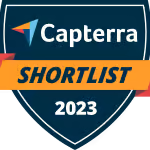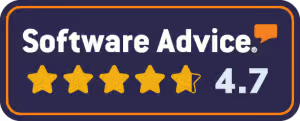In today’s digital-first world, it pays to effectively distribute your content, maximize your distribution revenue and reach new readers. Even small adjustments can add up—literally. Join us as we explore strategies and best practices for optimizing your distribution for both print and digital publications.
Partner with Influencers to reach their audiences.
Alexandra Alvarado, Director of Marketing and Education at American Apartment Owners Association (AAAOA), spearheaded their digital-only magazine and grew their ad sales from the ground up to bring in extra revenue. To increase the fledgling magazine’s digital distribution, her team partnered with influencers and content creators in their space who had large audiences and through a “Best of” contest.
“We purposefully picked influencers in the space that had the largest mailing lists we could find, which helped us grow our publication quite a bit. Then all these new people were getting to know about the publication because they know somebody that’s in it. It’s not just, ‘Hey, this is an article I like.’ It’s ‘Hey, this is me featured in this magazine.’”
However, instead of charging the influencers for their participation, Alexandra’s team negotiated for exposure to their unique audiences instead. “You can put it in your magazine, and great you have some content. But if you’re not charging for that then what you’re hopefully getting back is an agreement that they’ll share it in X, Y, Z different ways, and every influencer has a different type of reach,” Alexandra explained. “I think what made it best was to provide them with as many resources as possible so it’s not work for them.”
Partnering with influencers increased the magazine’s digital distribution through social media, email, newsletters, wherever each influencer had the strongest following. But even more so, it benefitted both partners. “In terms of reach, 15% of our total views came from that partnership. Now we could boast bigger numbers, and they were so happy with it, they’ve continued to share the magazine.”
An unexpected bonus came when some of the partners became advertisers of their own accord. “It happened organically. You know, we had a partnership. We liked it, and then some of them have now become advertisers in our magazine. Which is really unexpected. We weren’t trying to get advertisers that way, but it’s kind of cool that they see the value in it.”
Expand Reach through Sponsored Webinars.
Alexandra’s partnership with influencers didn’t stop with the “Best of” Contest. To expand the reach of their digital articles, she began including an edited video recording of her interview with clients (or a pre-made commercial if the advertiser preferred that approach) and charging for the embedded link in the article. Then, she posted the video on the magazine’s social media channels and YouTube channel to capitalize on distribution.
Lately, however, Alexandra shared how this approach has evolved into a sponsored webinar. The client gets more exposure from the live audience, the team can charge a bit more for it, and both sides have video clips to use later in the magazine article and for the clients’ personal use.
“They seem to have liked that combination better,” Alexandra said. “I found we could make more. They get more exposure, and we still get the video clip. There’s no reason why it needs to just be me and that person. We can have a live event, where you can invite live people and do a Q&A with them. Then take clips of that and use the highlights in an article, and they can use it too. They see a lot more value in that.”
Convert content from special editions for digital platforms.
Another great way to maximize your distribution digitally is to convert special print content for use in different digital forms. Joe O’Donnell, Editor and Publisher of B-Metro and BHM Biz magazines, shared how his team has converted pieces of his special edition The Faces of Birmingham into digital pieces to expand distribution.
Many city and local magazines are already familiar with Joe’s Faces program and have even adopted it in their own magazines for additional revenue. Joe shared how over the years, he’s worked to adapt the print version into content for different digital channels: “Once the internet became more important, we added in some additional benefits to the advertiser. We did a ‘Face of the Day’ post on social media featuring one of the advertisers. We also did a Faces email newsletter that would highlight one person. They were add ons to our pricing, but they weren’t very expensive add ons. We just ratcheted it up a bit to cover the expense of our time.”
This year, Joe is trying out yet another approach to increase both the digital reach of the Faces program and expand on the program itself.
“We’re going to do more digital stories on a quarterly basis to keep Faces more alive,” he explained. “So if something big is happening in your organization, we can cover it. It’s all digital, not print. We thought it would help extend Faces and turn it into more of a program, not just a buy. So far it’s doing pretty well."
Focus on Meaningful Print Distribution.
Chris Johnson, publishing strategist and former publisher with more than 20 years of experience, challenges publishers to look at their current print distribution methods and make sure it’s meaningful for your advertisers. Instead of taking a classic spread-as-far-and-wide-as-you-can approach, he challenges publishers to be more intentional and strategic about where and how you distribute your content—so you can provide your advertisers with more solid distribution data.
In today’s digital age, random distribution is no longer effective advertising. Your advertisers want more targeting and solid distribution data, not less. Focusing on meaningful distribution removes the gamble for your advertisers.
That’s why, as popular as rack distribution is, it isn't the best approach. “A lot of publishers run to rack distribution because it’s far less expensive than postage, “Chris explained. “But when you do rack distribution, you don’t necessarily know what happens there. You don’t know who picks up how many. You don’t even know if they get picked up. Instead, you need to have concrete data for your advertisers as to where the magazine is going.”
Create a Sense of Exclusivity for Your Content.
Readers want content that’s super relevant to them and that feels exclusive. Even though this is the name of the game for publishing, exclusivity and relevancy becomes even more important for distribution.
In his experience as a free community magazine, Chris focused on creating a sense of exclusivity by only distributing through direct mail: “I viewed it as a supply and demand thing, where if it was distributed everywhere, then it really wasn’t valuable. So we were strategic in saying we mail you a copy and that’s the only one you’re going to get so you better hold onto it.
“If people in the community think they can just pick up a copy at the local 711 or wherever, chances are they won’t do it. This approach worked out for us. Our reader survey showed that 34% of readers read the magazine cover to cover, and they kept it for an average of four to six months. We actually got calls from people asking if they could get more copies,” Chris said.
Maximize Print Distribution for Advertisers.
With your advertisers, the selling point isn’t as much about circulation as it is about distribution, Chris challenges. Your advertisers want to know that the money they're investing in your advertising will actually reach the amount of people you claim it will. The best way to prove that is to provide air-tight distribution numbers. When you can prove that your content directly reaches X amount of people, your value to that advertiser increases.
That’s why rack and general distribution can end up being an unnecessary cost. On top of your printing expenses, you’re paying someone to deliver those copies, pick up leftovers—and you still don’t even know how effective your distribution was.
”As a publisher, you’re always balancing your distribution with your advertising,” Chris explained. “With direct mailing, I could show my advertisers a receipt from the post office saying I mailed 62,000 magazines, and I know exactly where they went. You want to advertise with me.”






